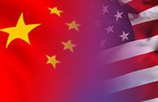Tea tour gives expats a taste of China's fragrant brews
Updated: 2015-08-25 07:33
By Mike Peters(China Daily)
|
||||||||
 |
|
Staff members at a Maliandao store pack the just-arrived Xihu Longjing tea into small bags. [Photo/CFP] |
All true teas are harvested from the same plant, the camellia. The variety comes from the climates and soils in which each is grown. We learn about first-pick teas, how green tea is "fired", how the biggest tea trees look like denizens of an old-growth forest, and the health benefits that can come with the fermentation and aging of teas like pu'er from Yunnan province.
Most of the shops in the market, Han says, are run by the families who grow the tea in different provinces around China. It's a bit like being in an outlet mall for tea, though most stall owners now also sell other types of tea besides their own, hoping to get more sales from each person who comes in.
That's one reason our group is happy to be on a guided tour in English. Only about half of us speak or read Chinese, so wandering through on our own would result in a grab-bag of browsing. Most shop owners speak no English, and since most offer more than one tea type it's hard to learn much if you can't ask questions.
Besides Han's expertise and running commentary, we enjoy buying the teas we like best at a near-wholesale price-even though we are usually buying 50 to 200 grams at a time.
After lunch we move on to oolong (blue) and black teas. As we sip these more robust teas, Han explains how the leaves are rolled and cut, how the British impacted the world tea market, and how flavors such as Earl Grey are produced.
On our final stop, we explore some floral teas, like jasmine, and the paraphernalia used in preparing and serving tea. This section of the "tea mall" has dealers with ceramic tea services, storage jars and canisters, and "tea pets", the clay figurines of the Buddha or animals that are ceremonially doused with the first wash of tea until they are stained with rich color and age.
At the end of a pleasant afternoon, we march back to the subway and head home, clutching our purchases and feeling a little smarter about our morning beverages.
Of course, we haven't learned everything there is to know about tea. But we won't lose as much sleep over it. And we know where to learn more.
If you go
10:30 pm-3:30 pm, Sept 6 and 20.
Tour starts at the Wanzi station on subway line 7. 300 yuan ($47) per person; 250 yuan for members of The Hutong; includes a substantial Fujian lunch and drinks.
To book, go online at www.thehutong.com or call 1590-104-6127.

 Bull crushes bear in stock market statue
Bull crushes bear in stock market statue
 Top 10 emerging cities on the Chinese mainland
Top 10 emerging cities on the Chinese mainland
 Jamaican Fraser-Pryce again becomes world champion
Jamaican Fraser-Pryce again becomes world champion
 Glowing in the night
Glowing in the night
 Mechanical horse dragon Long Ma performs in France
Mechanical horse dragon Long Ma performs in France
 Giant panda Bao Bao celebrates two-year birthday
Giant panda Bao Bao celebrates two-year birthday
 Across America over the week (Aug 14 - Aug 20)
Across America over the week (Aug 14 - Aug 20)
 Stars in their eyes: leaders in love
Stars in their eyes: leaders in love
Most Viewed
Editor's Picks

|

|

|

|

|

|
Today's Top News
China share plunge smacks world markets
30 heads of state to attend China's Victory Day celebrations
ROK, DPRK agree to defuse tension
Tsinghua University crowned 'wealthiest' Chinese school
China equities collapse sparks global markets sell-off
Targets set for regional integration
China advocates practical cooperation between LatAm, East Asia
Giant panda gives birth at Washington's National Zoo
US Weekly

|

|






